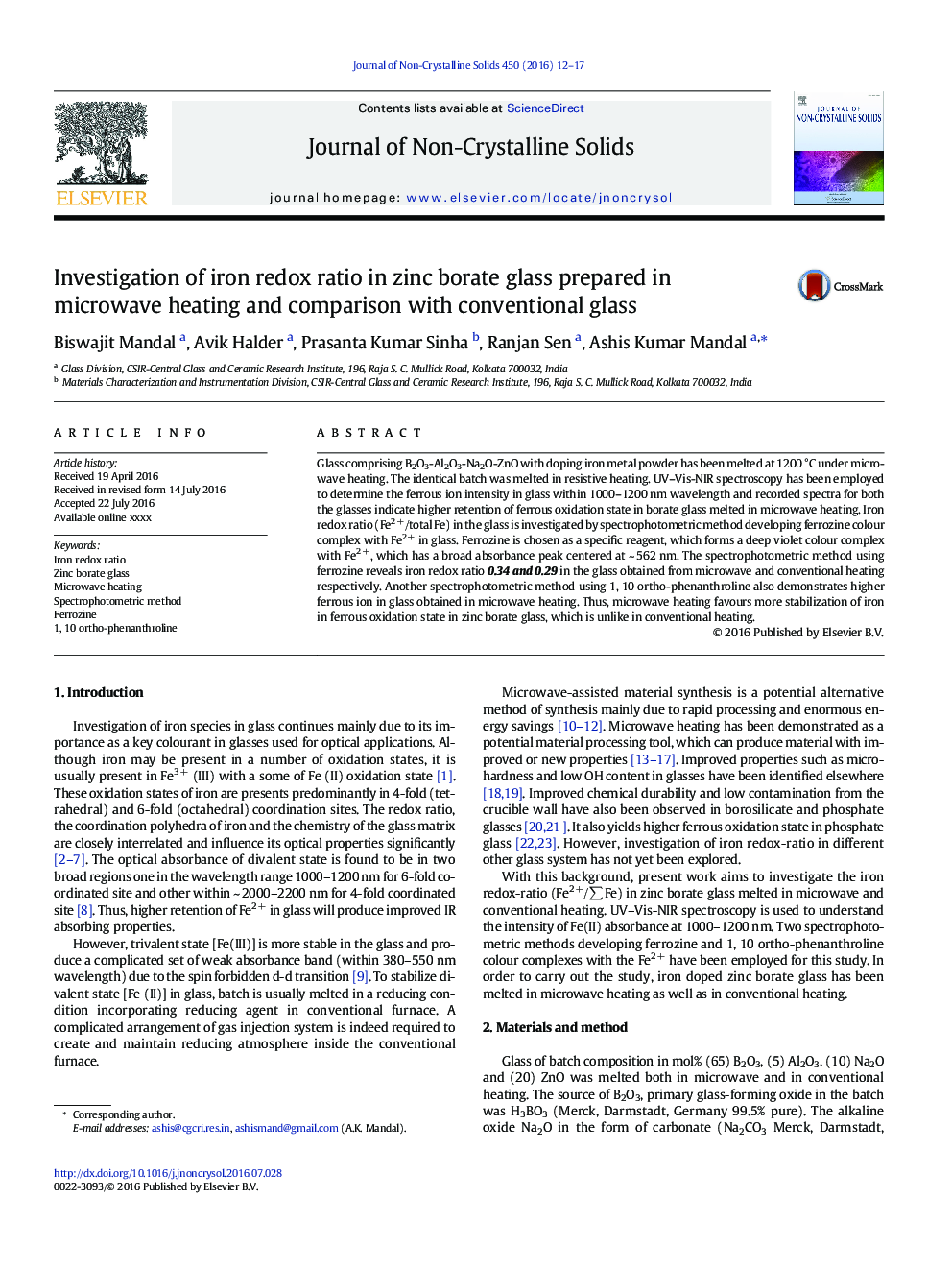| Article ID | Journal | Published Year | Pages | File Type |
|---|---|---|---|---|
| 1480107 | Journal of Non-Crystalline Solids | 2016 | 6 Pages |
•Zinc borate glass doped with Fe has been melted under microwave (MW) heating.•Absorbtion spectroscopy indicates higher yield of Fe+ 2 in zinc borate glass obtained from MW heating.•Estimation of Fe2 + in glass prepared by (MW) heating with two spectrophotometric methods developing ferrozine and 1, 10 ortho-phenanthroline complexes.•Iron redox ratio has been evaluated 0.34 and 0.29 in the glass melted in microwave and conventional heating respectively.
Glass comprising B2O3-Al2O3-Na2O-ZnO with doping iron metal powder has been melted at 1200 °C under microwave heating. The identical batch was melted in resistive heating. UV–Vis-NIR spectroscopy has been employed to determine the ferrous ion intensity in glass within 1000–1200 nm wavelength and recorded spectra for both the glasses indicate higher retention of ferrous oxidation state in borate glass melted in microwave heating. Iron redox ratio (Fe2 +/total Fe) in the glass is investigated by spectrophotometric method developing ferrozine colour complex with Fe2 + in glass. Ferrozine is chosen as a specific reagent, which forms a deep violet colour complex with Fe2 +, which has a broad absorbance peak centered at ~ 562 nm. The spectrophotometric method using ferrozine reveals iron redox ratio 0.34 and 0.29 in the glass obtained from microwave and conventional heating respectively. Another spectrophotometric method using 1, 10 ortho-phenanthroline also demonstrates higher ferrous ion in glass obtained in microwave heating. Thus, microwave heating favours more stabilization of iron in ferrous oxidation state in zinc borate glass, which is unlike in conventional heating.
